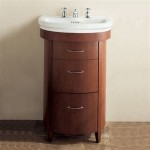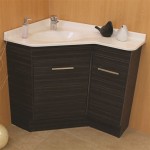How Do You Measure Bathroom Sink Size?
Choosing the right bathroom sink can be a crucial part of any bathroom renovation or design project. A well-chosen sink can enhance functionality, style, and overall aesthetics, contributing to a more comfortable and enjoyable space. The key to selecting the perfect sink, however, begins with understanding how to accurately measure its size. This article provides a comprehensive guide to measuring bathroom sink size, walking you through the necessary steps and considerations to ensure you choose a sink that fits your needs and space perfectly.
Understanding Sink Dimensions
Bathroom sink sizes are typically expressed in terms of their width, depth, and bowl height. These measurements are crucial for determining how the sink will fit within your bathroom vanity or countertop and how you will use it. The width refers to the overall width of the sink from one side to the other, including the sides of the basin. Depth refers to the distance from the front edge of the sink to the back wall, and the bowl height is the measurement from the top of the sink to the bottom of the basin.
Different types of sinks have distinct size variations. For example, pedestal sinks typically have a smaller footprint as they are supported by a single pedestal, while vanity sinks are often larger to accommodate integrated cabinetry. Wall-mounted sinks are relatively compact but may require additional support structures, such as a wall-mounted cabinet or shelf.
Steps for Measuring Bathroom Sink Size
To ensure a perfect fit, follow these steps when measuring your bathroom sink size:
1. Measure the Available Space
Before you start browsing for sinks, it is essential to get accurate measurements of the space where the sink will go. If you are replacing an existing sink, measure its width, depth, and bowl height to use as a starting point. If you are installing a sink into a new vanity or countertop, measure the allocated space carefully. Be sure to consider any existing plumbing fixtures, such as faucets and drainpipes, and determine whether they will be compatible with the new sink.
2. Consider the Type of Sink
The type of sink you choose will greatly affect its dimensions. For example, a pedestal sink will have a smaller footprint than a vanity sink, while an under-mount sink will require a countertop with a specific cut-out. Look for sinks that are compatible with your existing plumbing fixtures, vanity, and countertop.
3. Measure the Basin Dimensions
The basin is the bowl of the sink used for washing hands and face. Measure the basin's width, depth, and height. These measurements will determine the size of the items that can be placed in the sink and the amount of water that it can hold.
4. Determine the Width and Depth of the Sink
Measure the overall width and depth of the sink, including the sides of the basin. These measurements will determine the space the sink will occupy on the countertop or vanity.
5. Measure the Height of the Sink
The height of the sink is the measurement from the top of the sink to the bottom of the basin. Consider the height of the countertop and the overall height of the vanity when choosing a sink.
6. Account for Faucet and Drain Placement
The placement of the faucet and drain will impact the sink's overall dimensions. Choose a sink with the appropriate faucet and drain placement, making sure that these fixtures are aligned with the existing plumbing lines.
Additional Considerations
While the above steps provide a comprehensive approach to measuring bathroom sink size, there are some additional considerations to keep in mind:
1. Countertop Thickness
The thickness of your countertop will impact the overall height of the sink. If you are installing an under-mount sink, ensure that the countertop is thick enough to accommodate the sink's depth.
2. Vanity Cabinet Size
Ensure that the sink's dimensions are compatible with the size of your vanity cabinet. The sink should fit comfortably within the cabinet, leaving enough space for drawers and shelves.
3. Plumbing Fixtures
Take into account the size and location of your plumbing fixtures, such as faucets and drainpipes, when measuring the available space for the sink.
By carefully measuring your bathroom sink size and taking into account the specific dimensions of your space, you can ensure that you choose a sink that fits perfectly and enhances the functionality and aesthetics of your bathroom.
How To Measure For A Bathroom Basin Or Sink Victoriaplum Com

Bathroom Layout Measurement Advice Victoriaplum Com More

How To Measure A Bathroom Sink Size Lavatory For Replacement

How To Choose The Right Vanity For Your Bathroom Riverbend Home

How To Measure A Basin

What S The Standard Depth Of A Bathroom Vanity

Bathroom Measurement Guide These Are The Measurements You Need To Know

How To Measure A Bathroom Sink Size Lavatory For Replacement

Homeowner S Guide To Bathroom Sink Dimensions And Sizes The Family Handyman
How To Measure A Vanity Sink Bathroom Dimensions Standard Size Vevano
Related Posts







